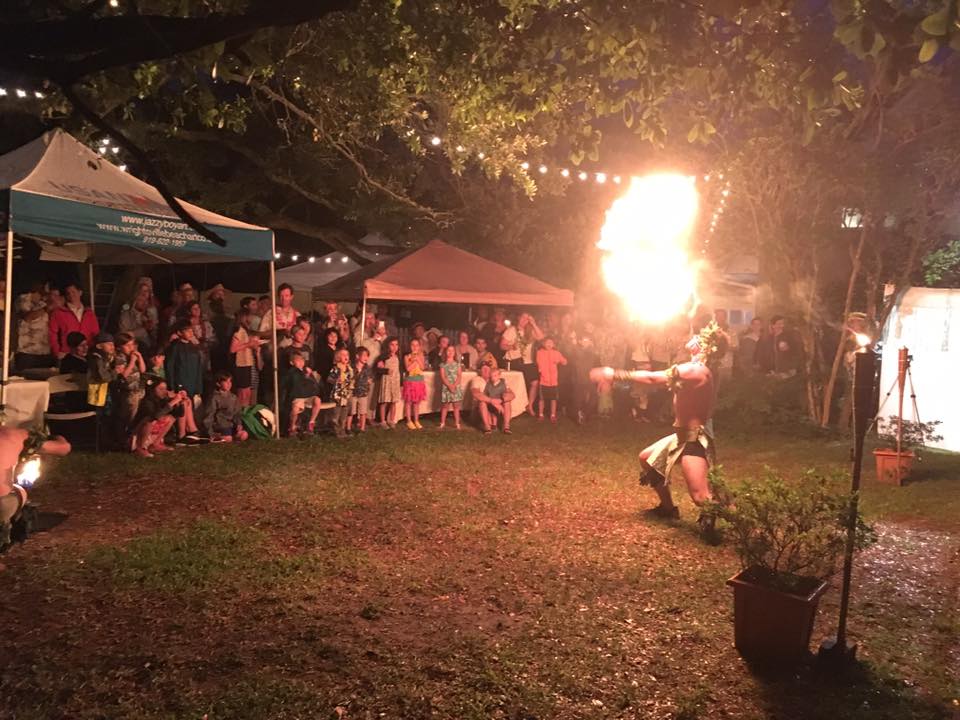With the goal of having more residents of Wrightsville Beach pay closer attention to local water quality and environmental issues, neighbors in Harbor Island held a “Hawaiian Luau Summer Bash” membership drive for the North Carolina Coastal Federation on Saturday, May 13. Meanwhile, the Coastal Federation accepted a regional environmental award this week for innovation for its stormwater runoff project in Wrightsville Beach and neighboring areas.
“We wanted to increase local representation of the Coastal Federation,” said David Cignotti, one of the luau organizers. “We wanted to educate the locals on what they do, not only at the beach, but across the state, and encourage them to join.”
The party helped raise 60 new $35 annual memberships for the federation, Cignotti said. It also entertained many of the Harbor Island neighbors, who came out in Hawaiian shirts, ate Hawaiian Pork from Eaton at Home Culinary Services, listened to Hawaiian music and watched hula and fire dancers.
Meanwhile, members of the federation were in Charleston, S.C.on Monday, May 15 to accept a regional 2017 Rain Catcher Award from the Environmental Protection Agency (EPA) Region 4 for various innovative stormwater runoff infiltration projects in Wrightsville Beach. The collaborative team that worked on the project also included the North Carolina National Estuarine Research Reserve (NCNERR), the town of Wrightsville Beach, the city of Wilmington, Blockade Runner Beach Resort and professional consultants.
The team received this award for eight projects under the Bradley and Hewletts Creek Watershed Restoration Plan. These projects redirect runoff from hard surfaces and allow runoff to filter into the ground, providing successful demonstrations of options to prevent polluted stormwater runoff for new and redevelopment scenarios.
The projects were implemented on both public and private properties and are highly visible. The projects include cost-effective, straightforward and innovative designs that work within existing urban landscapes. These include: regrading an area in front of a restaurant in order to infiltrate runoff that formerly flowed into a drain; two curb cuts that redirect 8,600 square feet of runoff into a grassy median; installation of reverse storm inlets that divert runoff into existing grassy areas to infiltrate runoff; disconnecting a street drain system into a rain garden; check dams; pervious pavement; and soundside street-end projects that redirect flow from swimming waters, including construction of an innovative perforated infiltration system/cistern design that redirects runoff from recreational waters at the Blockade Runner Beach Resort.
Some of these projects are showcased on the federation’s Walk the Loop tour that allows pedestrians to take a walking tour of retrofits along the John Nesbitt Loop in Wrightsville Beach. The Blockade Runner projects were recently completed and are successfully redirecting runoff.
“We are very proud to receive EPA’s Rain Catcher Award on behalf of our partners who worked hard to make these projects successful,” said Tracy Skrabal, coastal scientist for the federation’s Wrightsville Beach office. “The lasting benefit of this recognition is that it helps us to educate other municipalities, as well as public and private landowners, about these innovative and highly effective project designs.”
Email [email protected]




